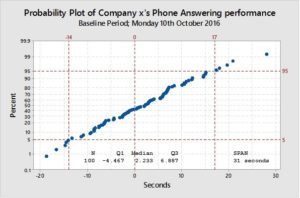This isn’t another knowledge piece on what will happen post-Brexit. To be honest, I don’t know what will happen. And guess what, no one else does either. Don’t be fooled by economists, politicians or business leaders, they have great insight but can’t offer any certainty. However, what you can be certain of is that the outcome of the June 23rd referendum provides the UK with a once in a generation opportunity, to find a position in world business that suits our collective skills and knowledge.
Sure, we can look back nostalgically at our impressive manufacturing heritage and complain what could have been if the various mistakes of the past had not happened. Or we can look ahead to a new position, one that is born out of current domestic success. We quickly need to carve our own United Kingdom shaped niche. What’s is that special position I hear you cry? Service, service, service!
Service industry
It will come as no surprise to you that the UK is a service economy, but can you believe that we ‘only’ export £0.1tn*. In comparison, with an estimated £0.97tn* Germany’s engineering exports represent almost ten times that value. This is the chasm that the UK urgently needs to address. The next couple of years provide an opportunity to gear up and create a collective competitive advantage as a service economy. Service companies need to increase their productivity, create agile capacity (to be turned on when needed) and start to position themselves on the global stage as the service partner of choice.
Variance in service
So, as service providers, how do you start to address this? First you need to thoroughly understand your current performance baseline. At R&G Global Consultants we work with service companies for over ten years to enable them to ‘do things differently’. Our methodology Service Span™ enables you to analyse what your customers experience when receiving a service from you, and the variance in that service. Service Span was born out of supply chain management. It has a powerful and transferrable application to service companies. Rather than measuring the on-time delivery of a product, it provides you with valuable insights on the delivery of your service.
Service span
An example. One of our clients is a service partner for banks. They handle customer enquiries on behalf of those banks. To achieve customer satisfaction they must answer the phone within sixty seconds of the customer dialing. The performance during one day varies considerably.

The stats show that on average our client is 2.2 seconds late. I’m sure you will agree that seems not too bad. A more thorough analysis with Service Span shows us that our client’s customers in 90% of cases experience anywhere between 14 seconds early and 17 seconds late, a huge 31 second difference. Our client experienced a large increase in customer satisfaction by narrowing this Service Span. The beauty was they could do it by shifting the lead-time consumed from the ‘earlies’ to the ‘lates’. For our client Service Span proved to be powerful methodology to align service to customer expectation.
Untapped capability
I truly believe we have the untapped capability to deliver improvements across the service sector. For UK service companies now is the perfect moment to be brave, invest and realise that capability, in time for when the world comes a-knocking. Personally I can’t wait for the day to day to arrive at Heathrow and the sign above passport control reads, ‘Welcome to The United Kingdom of Great Britain, at your service’.
Sam Clarke is a Business Process Consultant based in the UK. For further questions on Service Span™, please contact him at sam.clarke@rnggc.com or on +44 (0) 7850194718.
https://rnggcna.com/whitepapers/supplychain/


